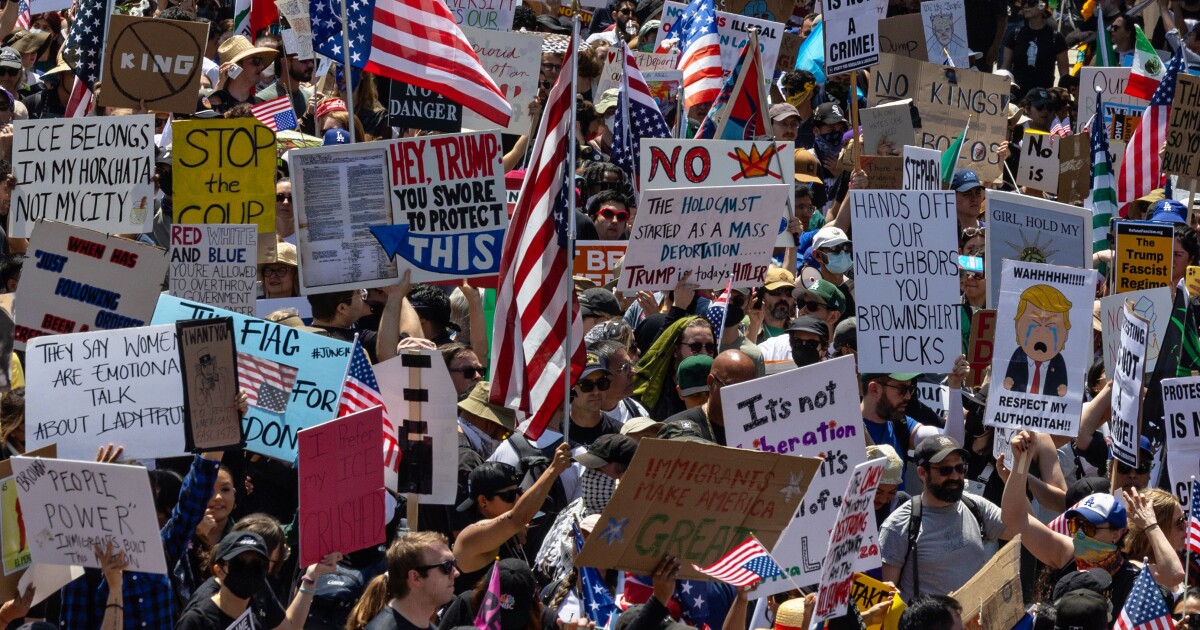As Los Angeles grapples with a series of U.S. Immigration and Customs Enforcement (ICE) activities and ongoing protests, the implications for the city’s economy, especially in downtown areas, are becoming increasingly evident. The economic landscape is currently under pressure, not only due to the immediate consequences of ICE actions but also as the city tries to stabilize after the disruptions caused by the COVID-19 pandemic. This article will explore how these factors interplay and affect various sectors, particularly focusing on the downtown Los Angeles area.
Recent discussions with Chris Thornberg, the founding partner at Beacon Economics, shed light on the significant ramifications of these recent events. Thornberg emphasized that the downtown area is facing uniquely adverse effects from these ICE activities and protests. While the rest of the city struggles, downtown Los Angeles, historically a hub of vibrancy and economic activity, is now seeing a downturn as businesses struggle to cope.
### A Still Recovering Downtown
Downtown Los Angeles has long been a symbol of revival and growth. Before the pandemic struck, areas like this experienced a renaissance with new businesses and an influx of foot traffic. However, Thornberg noted that the recent ICE sweeps have further complicated a recovery that was slow and uneven. The ongoing demonstrations and enforcement actions have led to a sharp decline in customers for many businesses already dealing with the rising issues of homelessness and safety concerns.
In addition to economic downturns, there is now a curfew in place to manage the situation and mitigate risks associated with large gatherings. This curtailment of business hours has left many restaurants and shops adjusting their operations, focusing more on lunch services instead of dinner as they navigate this complex landscape. It’s a stark reminder of how quickly a vibrant economy can shift due to external pressures.
### Threats to Tourism
The broader perception of Los Angeles as a tourist destination is at risk as well. National media coverage of recent events has depicted the city in a negative light, with fiery images leading many to believe that Los Angeles is a city under siege. Thornberg pointed out that while only small portions of the city are actively affected, the perception that L.A. is dangerous can discourage potential tourists. Tourism is critical for Los Angeles’s economy, contributing billions annually and supporting a multitude of jobs.
If visitors perceive Los Angeles as unsafe or unrest-ridden, the city could face a significant decline in tourism revenue. This scenario is especially concerning given that I.C.E. activities and their subsequent protests could further discourage visitors, creating a chilling effect that extends beyond just the immediate impact of the events taking place.
### The Nation’s Labor Force
Another area of considerable concern is the labor market, especially in light of ICE actions and potential immigration restrictions. With nearly 20% of the U.S. labor force being foreign-born, according to the Bureau of Labor Statistics, a significant portion of essential workers in various industries are undocumented and could be adversely affected. Thornberg warned that reduced immigration could tighten the labor market, slowing economic recovery even further.
Drawing parallels to the first Trump administration, he noted that it was not merely aggressive deportation policies that affected the economy. Instead, a broader environment of fear and uncertainty deterred potential immigrants from coming to the U.S., leading to significant stagnation within the labor force. This could create a chilling effect on the economy over time, curtailing growth in various sectors that depend heavily on immigrant labor, particularly in hospitality and agriculture.
### Long-term Economic Effects
While the immediate impacts of ICE activity may seem concentrated in downtown Los Angeles, Thornberg stresses the significance of these events on a broader scale. Industries across the city may ultimately feel the effects if the current climate of uncertainty persists. As ICE continues its operations, economic repercussions could extend beyond local businesses and tourism, encompassing the overall labor market and industrial productivity.
Thornberg expressed skepticism about whether ICE has the resources for extensive deportations that would lead to long-term economic turmoil. However, the prevailing worry remains that even the fear generated by these actions can have chilling effects that disrupt the labor market and the overall economy, hindering recovery efforts that still linger in the shadow of the pandemic.
### Conclusion
The impacts of ICE activity and protests are complex and multifaceted, particularly in a city like Los Angeles, which aims to bounce back from a challenging economic period. As much as this is a narrative about enforcement and protest, it represents a broader discussion about public perception, the vitality of tourism, and the accessibility of a reliable labor force.
For the city to thrive again, residents and business owners alike must be prepared to navigate the changing landscape, addressing not only their immediate challenges but also the long-term implications for Los Angeles’s economy. The need for unity, resilience, and a concerted effort to tackle the issues head-on has never been more urgent.
Los Angeles stands at a crossroads, and how it responds to these recent developments could shape its economic future for years to come. The emphasis on creating a more welcoming environment that fosters productivity, tourism, and community togetherness will be vital for navigating this intricate moment in the city’s history.
Source link










